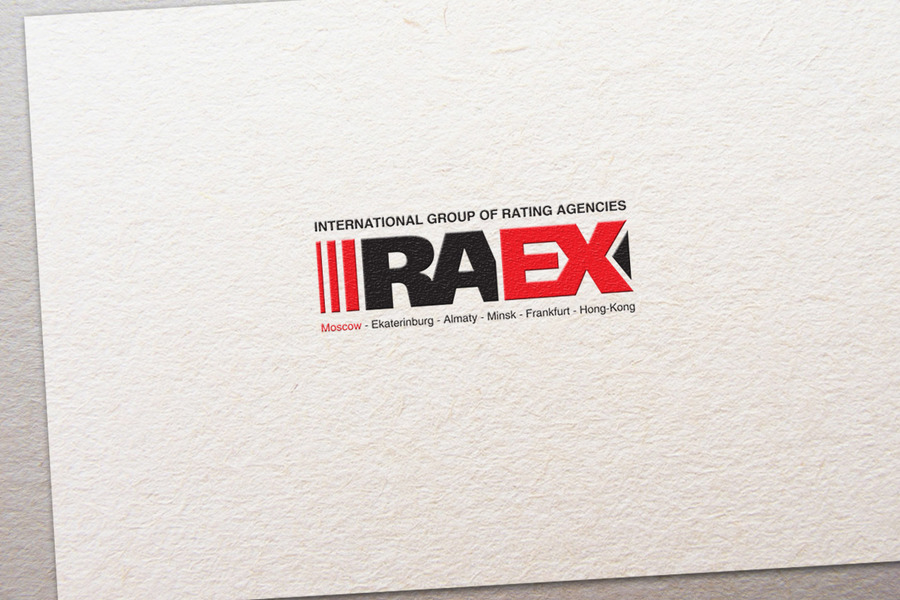Uzbekistan’s rating upgraded from B+ to BB-: RAEX-Europe

Rating-Agentur Expert RA upgraded the sovereign government credit rating (SGC) of Uzbekistan from ‘B+’ (Moderately low level of creditworthiness of the government) to ‘BB-’ (Sufficient level of creditworthiness of the government) in national currency and from ‘B+’ (Moderately low level of creditworthiness of the government) to ‘BB-’ (Sufficient level of creditworthiness of the government) in foreign currency.
The rating outlook is stable which means that in the mid-term perspective there is a high probability of maintaining the rating score.
“The upgrade of Uzbekistan’s credit ratings reflects the sustained reduction of the financial dollarization as well as the successful entry to the international capital market by issuing the first emission of Eurobonds in February 2019. The solid fiscal stance, including low government debt and narrow budget deficit, robust economic growth, profitable and well-capitalized banking system remain the credit strength of the country.
At the same time, the ratings remain restrained by elevated and volatile inflation, low level of economic and institutional development, high share of FX-denominated government debt as well as underdeveloped local capital markets. In addition, high levels of credit segmentation with a widespread policy based lending on preferential rates, and high concentration of the banking system, led by state-owned banks, are the key credit risks for the country.” – Clarified Vladimir Gorchakov, Associate Director of Rating-Agentur Expert RA.
Economic growth remains high, supporting the rating assessment. The first estimates show accelerated real GDP growth in 2018 at 5,1% yo-y as compared to 4,5% in 2017. Such a robust dynamic mainly reflects increasing investments and growing internal consumption, supported by wage increases. In terms of sectors segmentation, the key contributors to the economic growth are industrial output, that grew by 10,6% y-o-y in real terms, supported by mining and manufacturing industries; consumer services and construction.
The agricultural sector, accounting for more than 30% of gross value added, was stagnated due to unfavorable weather conditions and water shortages.
The agency expects the real GDP growth to be close to 5% in the mid-term perspective supported by investment and consumption growth, and reflecting the gradual implementation of reforms. At the same time, high reliance on the agricultural and commodities sectors (gold, cotton, metals and natural gas form more than 65% of country’s export) makes the economy vulnerable to weather and external risks.
GDP per capita in PPP terms remains one of the lowest in the region at USD7 338 in 2018, while unemployment rate is as high as 6,9%. Both metrics have been gradually improving over the last years. Taking into account the demographic outlook, only sustainable and inclusive growth together with successful implementation of reforms can lead to a substantial improvement of both metrics in the long-term perspective.
Debt load remains moderate, while the structure slightly improved following the new bonds issuance. According to the latest estimates, the level of public debt reached 24,6% of GDP and around 80% of fiscal revenues by end-2018. The metric reflects low credit risk for Uzbekistan despite the recorded debt accumulation over the last three years. Taking into account the government’s intention to increase the depth of the local debt market and strengthen its position on international capital markets, we can expect the public debt to GDP ratio to reach 25% by the end of 2019.
The currency structure remains the key risk factor in regard to the government’s debt position as almost 100% of public debt is FXdenominated and external. These risks are mitigated by the substantial accumulated international reserves equivalent to USD 27,1 bn, which cover total government debt and short-term debt by more than 3x and 63x respectively. Moreover, around 30% of government debt still can be considered as concessional (bilateral loans and credits from international financial institutions), which also partly mitigates repayment risks.
In December 2018 for the first time after the liberalization of the exchange rate, the UZS-denominated government bonds were issued on the local market with a nominal value of UZS 600 bn. Together with the issuances in February and March 2019 total volume of UZS-denominated bonds so far represents around 1% of the general government debt. However, we expect the government to continue issuing bonds on the local market along 2019, which is considered as a positive factor, reducing the currency
risks of the debt structure and improving the local financial market. In addition, in February 2019 for the first time ever, Uzbekistan issued USD 1 bn government bonds in the London Stock Exchange with two tranches with maturities in 2024 and 2029. The deal was priced with a yield of 4,8% and 5,4% on 5-year and 10-year notes respectively. By the end of February 2019 the latter papers were traded with a yield-spread around 2,8p.p. to 10-year US bonds, which is quite narrow for a developing
country entering the market. Moreover, this issue created a positive benchmark for Uzbek companies planning to issue FX-denominated debt in international markets in 2019-2020. Fiscal position is sound but still distorted by off-budget operations. We estimate consolidated fiscal balance2 to be around 2,7% of GDP by the end of last year, close to the 2017 reading of 2,1%; while the overall fiscal deficit, which includes policy-based lending operations3 was projected to reach 2,5% according to IMF estimates. Even the most conservative assessment of around 3% deficit is not a risk for the fiscal position of the government in our view, and we do not expect significant deterioration of the fiscal stance by end-2019.
At the same time, the above mentioned off-budget spending negatively influenced our assessment of the quality of fiscal policy. The gradual reduction of such operations and the unification of all government-led transactions within a single account can trigger an upgrade of the factor assessment. In addition, we already considered the ongoing tax reform and the introduction of the three-year fiscal plan (instead of one-year), as a positive factor for the rating.
We also kept unchanged our assessment of the government contingent liabilities and privatization plans. Since the economy and the banking system in particular, are dominated by SOEs, it creates significant implicit contingent liabilities for the government, which has to provide resources in case of financial distress. This was already observed in 2017, when the banks received liquidity and capital support prior to the UZS devaluation.
Since the government clarified that the improvement of corporate governance, transparency and financial position of major SOEs is a key short-term priority, we do not expect a significant reduction of the state share in the economy in the mid-term perspective. The authorities recently announced a restructuring program of several big energy companies, and even potential privatization of some state-owned banks.
In our view, these plans will potentially materialize beyond 2019, while short-term privatization actions will be limited by non-agricultural land plots.
Banking system metrics remain solid, but hidden risks persist. Total banks’ assets and gross loans grew by 28,7% and 51,3% y-o-y in nominal terms in 2018. These dynamics were mostly driven by loans to legal entities in the industrial sector, transport and communication industries for the purposes of investments and working capital. Mortgage and consumer loans increased by 48% and 265% y-o-y in nominal terms; however, they represent only 13% of total gross loans, posting a moderately low risks for the banking system stability; while more than 85% of total loans consists of corporate debt, mostly provided by stateowned banks to SOEs at preferential rates (considered as policy-based lending).
Profitability and capitalization metrics of the banking system remain sound with ROA at 2%, capital-to-assets ratio at 12,4% and Regulatory capital to risk-weighted assets ratio at 15,6% by end-2018.
The officially disclosed level of NPLs to total loans ratio remains moderately low at 1,3% despite the slight increase over 2018. However, the concentration risks are still high with the three largest banks accounting for 55% of total assets, while SOBs still dominate the system accumulating more than 80% of total assets by end-2018. Taking into account, that some of SOEs already faced financial distress after the exchange rate liberalization, and large share of restructured FXdenominated loans we can expect the banks’ balance sheets to deteriorate in the mid-term perspective. However, this risk is still partly mitigated by the high probability of support from the government.
Monetary policy remains tight but not fully efficient. The CPI index growth slowed down during 2018 and reached 14,3% y-o-y by the end of the year after posting the highest value of 20,1% in January 2018. However, due to increased exchange rate volatility in 2H 2018, rapid domestic demand growth, and the unfavorable inflation outlook, the Central Bank of Uzbekistan (CBU) increased the refinancing rate from 14% to 16% in September 2018 keeping the policy tight.
The efficiency of the transmission mechanism remains limited due to the above mentioned segmentation of the credit market and low independence of the CBU. Financial dollarization levels, which also distort the policy efficiency, declined gradually during 2018 and reached 56% of total loans and 38% of total deposits by the end of the year.
The latter was supported by a CBU decree to introduce elevated obligatory reserve norms for FX-deposits of legal entities. We expect the monetary policy to remain tight over 2018 and inflation to be in the range between 15% and 18% by end-2019, which is above the CBU’s forecast range between 13,5% and 15,5%. If the external environment remains moderately stable, we also expect dollarization to decrease further.
External position deteriorated. After the trade liberalization, imports in 2018 increased by 39,6% supported by credit growth mostly due to investment programs of SOEs. At the same time, exports increased only by 13,6%, leading to estimated trade and current deficits of 12% and 8% respectively. The agency expects both metrics to remain negative in the following years due to planned modernization of the national economy.
Related News

16:30 / 14.11.2025
Military service in Uzbekistan

17:37 / 03.12.2024
IUCN Representative Office in Uzbekistan officially begins operations

20:54 / 14.09.2024
Uzbekistan improves its position in global cybersecurity index

18:49 / 03.09.2024



